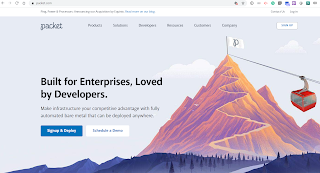Infinera has demonstrated the ability to carry an 800 Gbps wavelength across 800km on Corning’s TXF optical fiber.
The achievement leveraged Infinera’s sixth-generation Infinite Capacity Engine (ICE6) technology in a Groove (GX) Series platform transmitting 800G using 64QAM with probabilistic constellation shaping (PCS). ICE6 combines Infinera’s sixth-generation photonic integrated circuit with its in-house-developed 7-nanometer dual-channel 800G per-wave FlexCoherent digital signal processor.
Corning’s state-of-the-art TXF fiber is an ITU-T G.654.E compliant, ultra-low-loss, silica-core fiber with large effective area.
The companies said the success of the 800G trial highlighted the advanced features of Infinera’s vertically integrated ICE6 technology, including Nyquist subcarriers, per-subcarrier long-codeword PCS, and per-subcarrier dynamic bandwidth allocation, along with superior fiber designed to help meet growing bandwidth demands for network operators from metro to subsea network applications.
“This demonstration proves that 800G transmission using Infinera’s industry-leading technology enables a wide variety of network applications and is further enhanced by Corning’s innovative TXF fiber,” said Parthi Kandappan, Chief Technology Officer at Infinera. “This achievement is made possible by Infinera’s high degree of vertical integration including our in-house digital signal processor design, photonic integrated circuit design and manufacturing, and holistic in-house packaging.”
“We are pleased to work with Infinera to demonstrate how our combined leading-edge technologies can maximize capacity and reach,” said Jeanne Propst, division vice president, product line management, Optical Fiber and Cable, Corning Incorporated. “Our TXF fiber, with its high-data-rate capabilities and exceptional reach, helps network operators stay ahead of growing bandwidth demands while lowering their overall network costs.”
The achievement leveraged Infinera’s sixth-generation Infinite Capacity Engine (ICE6) technology in a Groove (GX) Series platform transmitting 800G using 64QAM with probabilistic constellation shaping (PCS). ICE6 combines Infinera’s sixth-generation photonic integrated circuit with its in-house-developed 7-nanometer dual-channel 800G per-wave FlexCoherent digital signal processor.
Corning’s state-of-the-art TXF fiber is an ITU-T G.654.E compliant, ultra-low-loss, silica-core fiber with large effective area.
The companies said the success of the 800G trial highlighted the advanced features of Infinera’s vertically integrated ICE6 technology, including Nyquist subcarriers, per-subcarrier long-codeword PCS, and per-subcarrier dynamic bandwidth allocation, along with superior fiber designed to help meet growing bandwidth demands for network operators from metro to subsea network applications.
“This demonstration proves that 800G transmission using Infinera’s industry-leading technology enables a wide variety of network applications and is further enhanced by Corning’s innovative TXF fiber,” said Parthi Kandappan, Chief Technology Officer at Infinera. “This achievement is made possible by Infinera’s high degree of vertical integration including our in-house digital signal processor design, photonic integrated circuit design and manufacturing, and holistic in-house packaging.”
“We are pleased to work with Infinera to demonstrate how our combined leading-edge technologies can maximize capacity and reach,” said Jeanne Propst, division vice president, product line management, Optical Fiber and Cable, Corning Incorporated. “Our TXF fiber, with its high-data-rate capabilities and exceptional reach, helps network operators stay ahead of growing bandwidth demands while lowering their overall network costs.”


















